
Museum of Remaking Hanzi
Project Type: Passion Project
Team Member: Ziyi Wang, Jinyun Li, Xinyu Zhang
My Role: Experience Designer & Craft Making
Credit: Some Assets in this showcase are made by Ziyi Wang
The "Museum of Remaking Hanzi" stands out as a distinctive interactive experience that blends hands-on and digital elements, offering engaging educational moments for language enthusiasts.
This experience focuses on the art of Chinese character 'Hanzi.' It not only simplifies the complexity of these symbols to make the learning process enjoyable and accessible for newcomers but also aspires to be a playful introduction to the language. Furthermore, the exhibition seeks to explore new possibilities for Hanzi as a language, pushing the boundaries of traditional understanding and usage.
Project Highlights
Video Demo

Physical Setup

Visual Design

During Wonderville Pop-up Show
Why We Wanna Create This Experience?
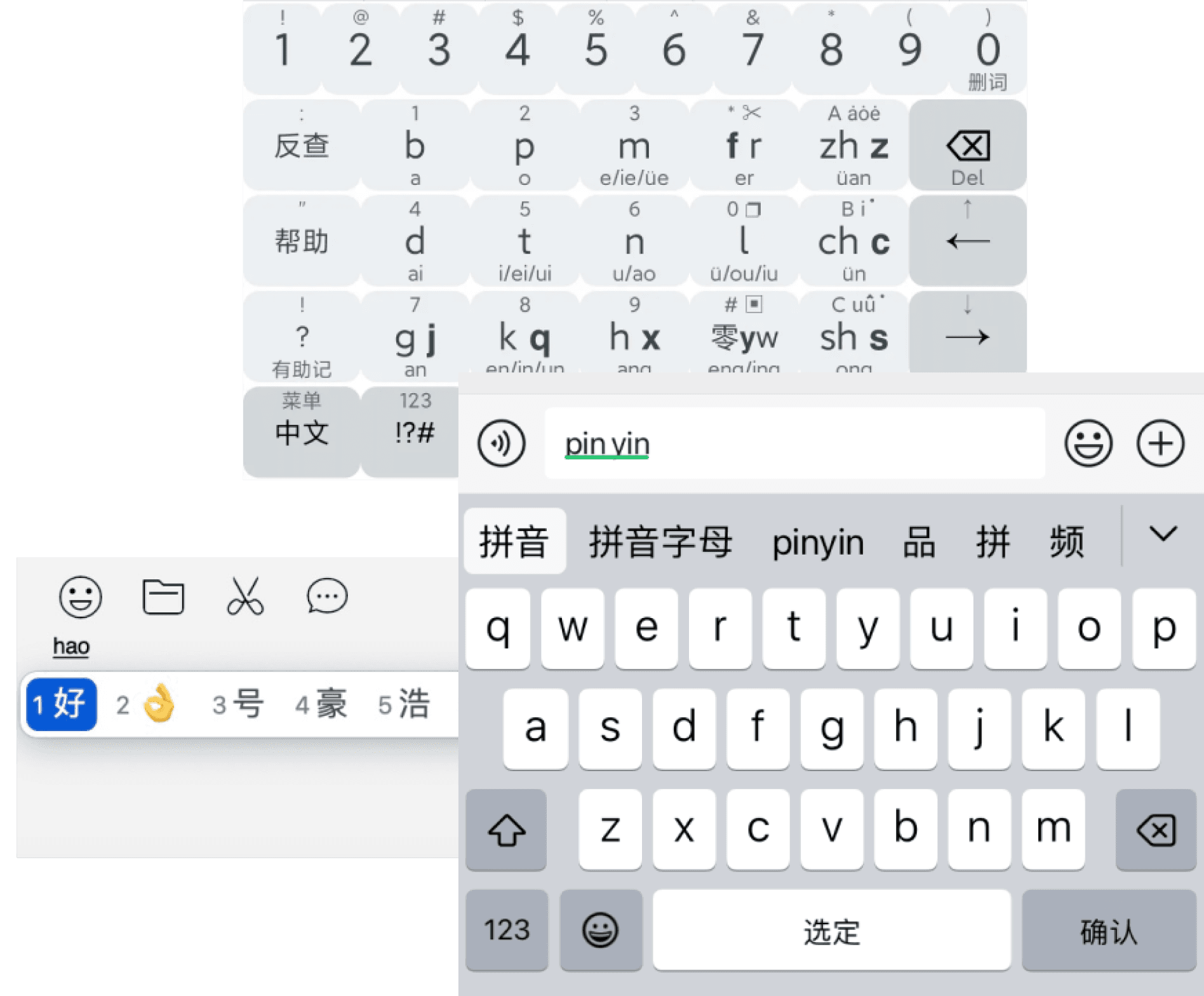
Input method utilize Pinyin
Contemporary input methods predominantly utilize pinyin, a phonetic system for inputting characters, which often overlooks the relationship between the form of the hanzi and its meaning.

The script for “bird”
WHILE THAT’S THE FUN PART!
We aim to create an interactive exhibit that highlights the unique connection between the shapes and meanings of hanzi, bringing to life the fascinating aspects of the language.
The Choice of Our Entry Point
Track 1 (Abandoned)
1.Use strokes as the basic components.

Basic Hanzi Strokes
We looked into basic hanzi structure to help organize strokes.
Basic Hanzi Structure Examples
We realized that strokes are too abstract and there are numerous combos that can be meaningless.
Meaningless Combos from Stokes
Track 2 (Our Choice)
1.Use simple and comprehensible hanzi as the basic components. We choose 木(wood)&口(mouth) as our start point.
mouth
wood
Hanzi “Mouth”&“Wood”
We explored their pictographic origins, aiding viewers in appreciating the visually representative nature of hanzi.
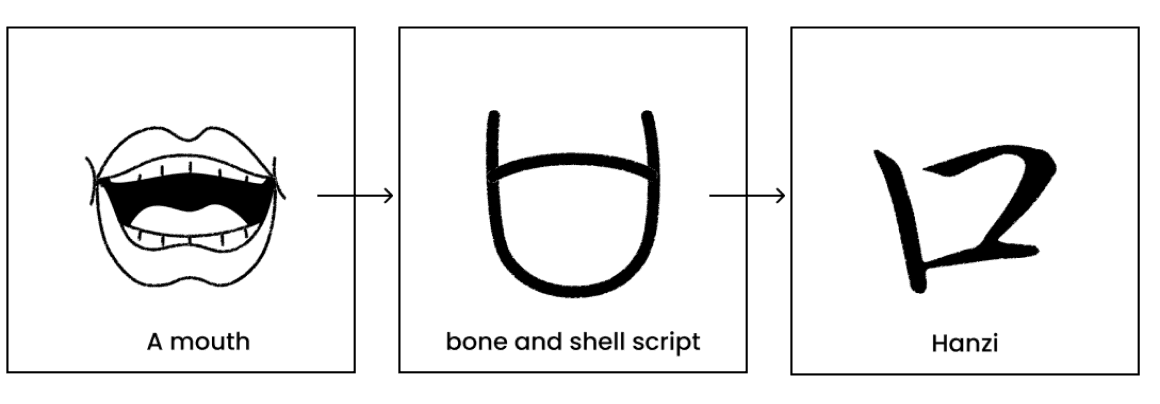

Pictographic Origins of “Mouth” & “Wood”
Both elements, when used as base characters and repeated, create new characters with related meanings, illustrating how visual repetition in hanzi extends their semantic range.
Combos of “Mouth” & “Wood”
Technical Diagram
& Core User Senario
The project configuration consists of two primary elements:
A digital aspect that showcases educational content, and
A tangible aspect featuring a grid, foundational character components, and a webcam, all intended for an engaging hands-on experience.
Together, these elements facilitate the core process of our user experience, as illustrated in the following image.

Iteration of the Interaction Flow
User Flow v.01

Play Testing and our takeaways
Play test Round 1
We tested the concept and interaction flow using a paper prototype with 20 players from diverse cultural backgrounds.


Takeaways:
People always goes back to the instruction page while assembling.
People’s creation are super interesting, and they enjoy seeing other’s creation.
Absolute beginners want more hints on how to assemble the real “Hanzi” and they feel accomplished when they succeed.
From Takeaways to User Flow Iteration

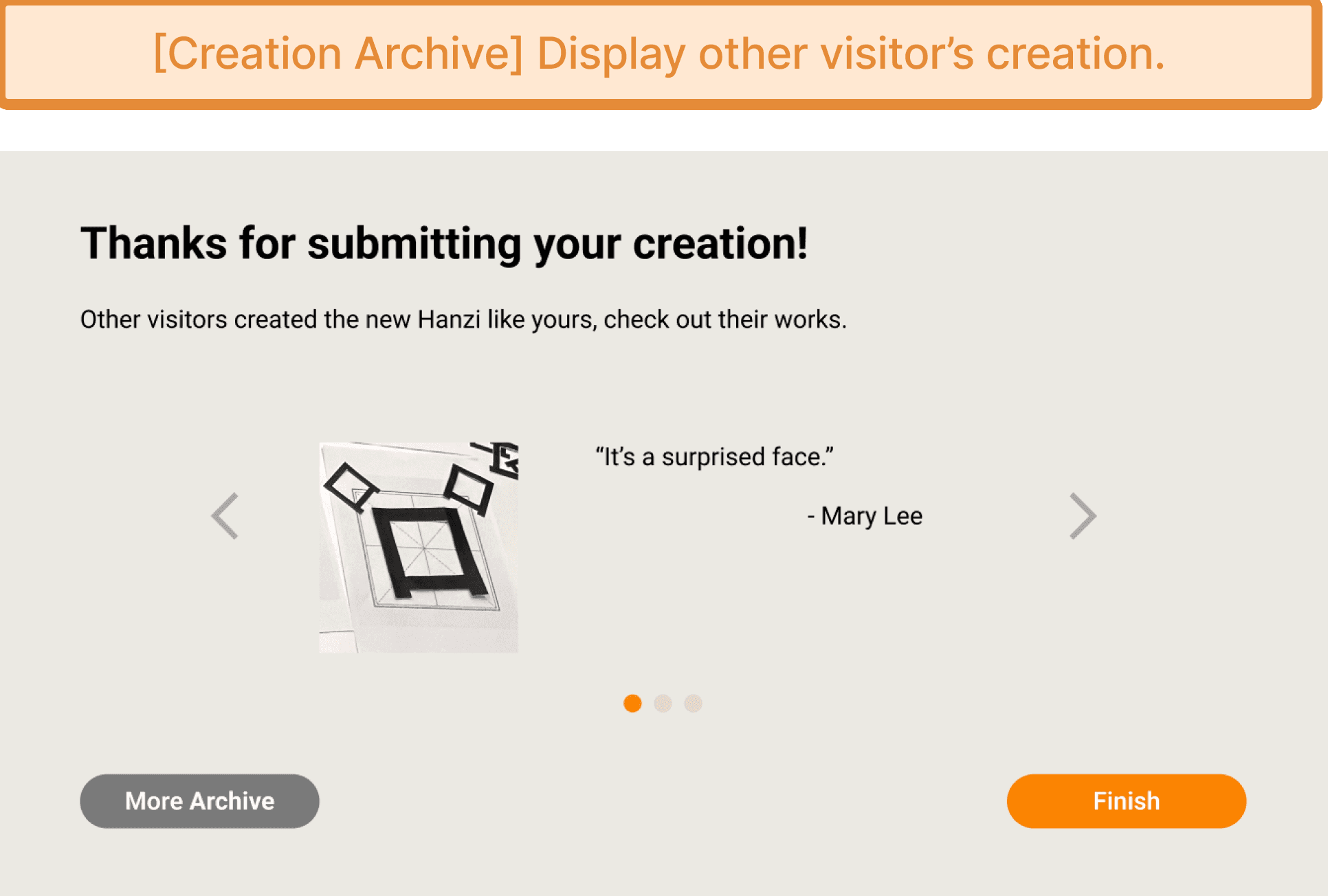

User Flow v.02
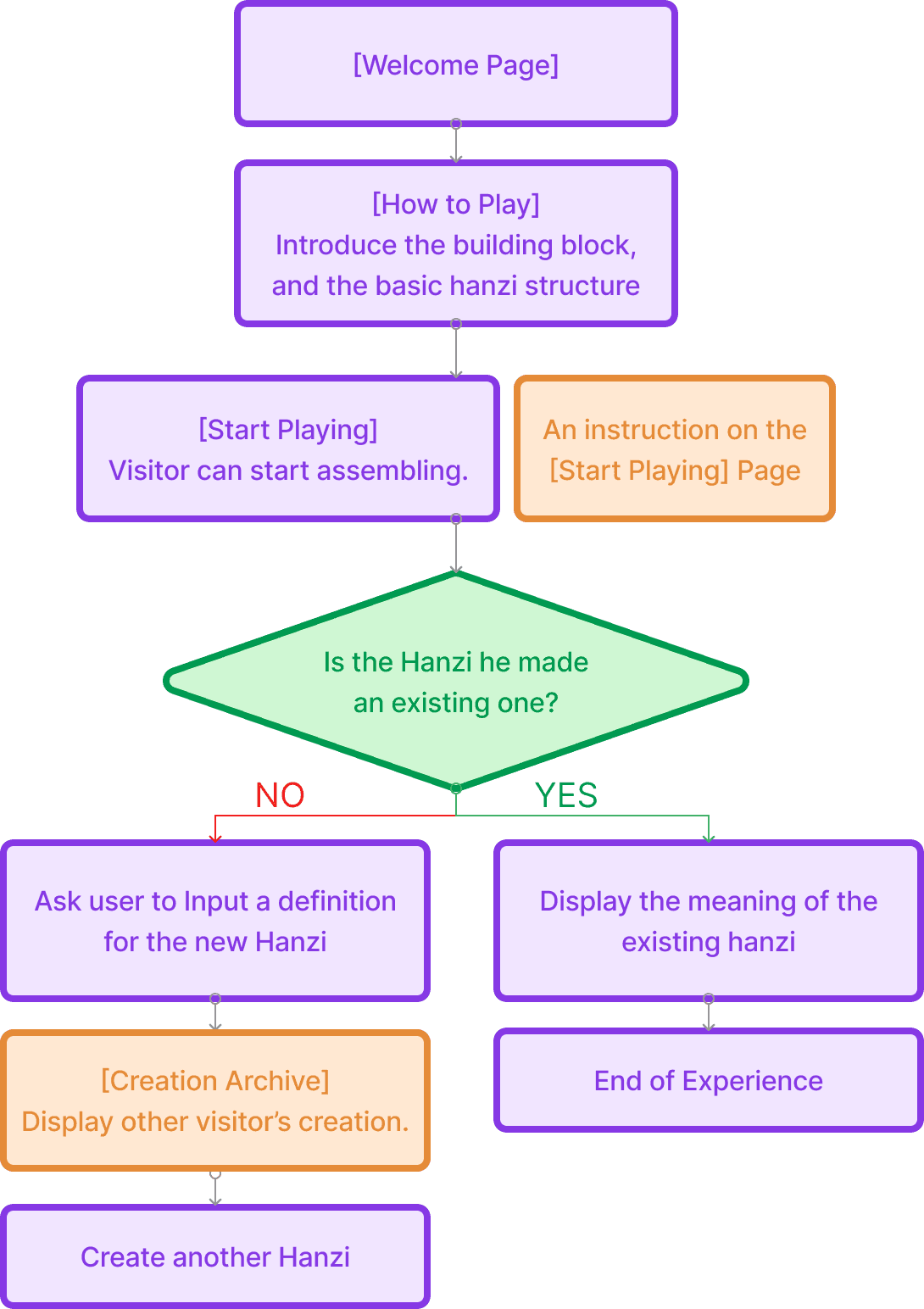
Play test Round 2
We tested our mid-fi prototype with 10 participants.

Takeaways:
Beginners need more guidance through hands-on experience, not static information.
People want to see their creation on the digital screen in real time aside from physical setup to feel more affirmation.
From Takeaways to User Flow Iteration

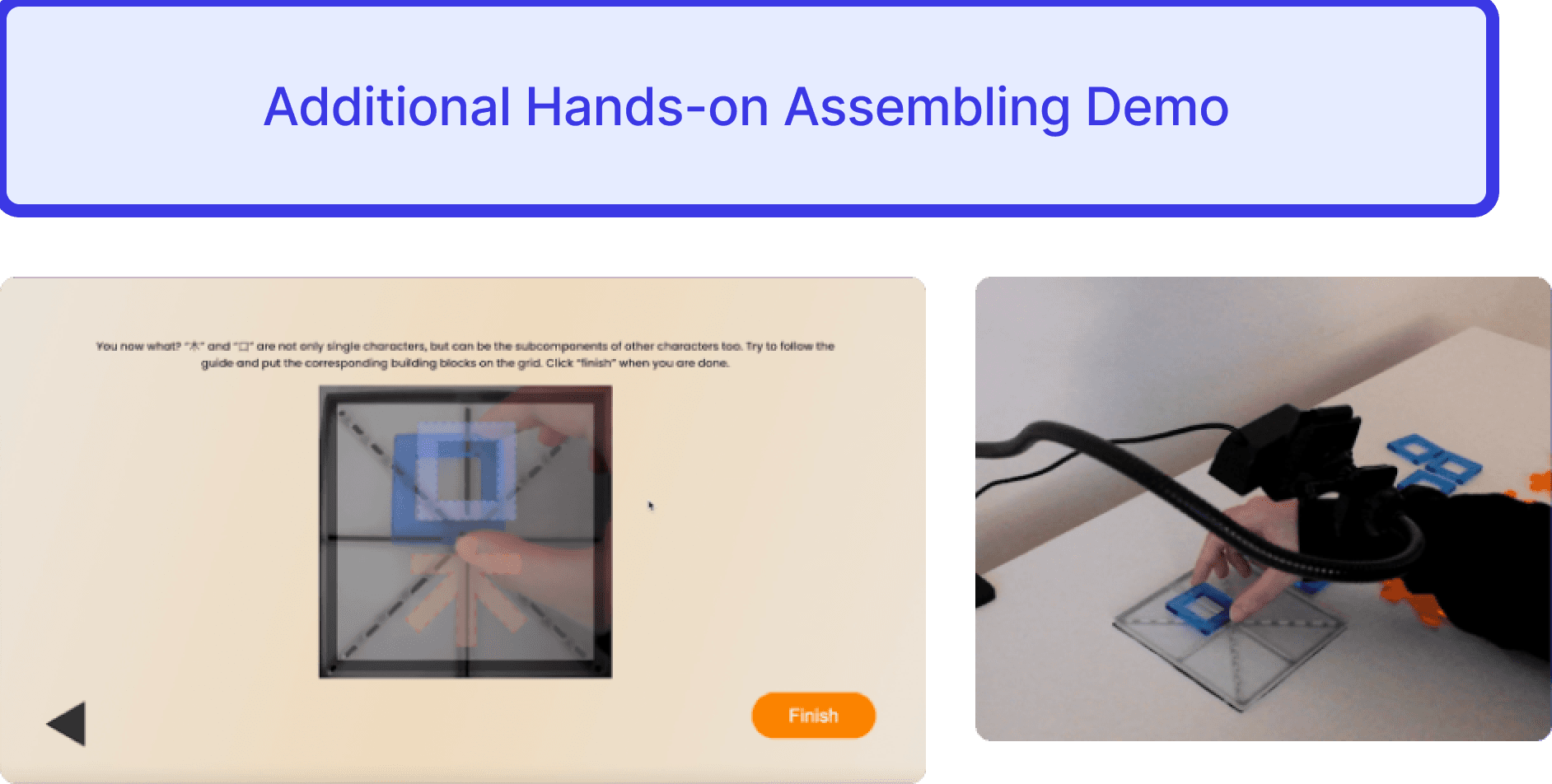
User Flow v.03

After three rounds of iterations, we got our final user flow.
Making Process Documentation
Tech Component:
We employed a webcam to record the character configurations arranged by visitors, incorporating code from Teachable Machine to identify and analyze the outcomes of their designs.

The Iteration of our physical Hanzi building blocks:

Building Blocks v.1.0
Version 1.0:
We utilized 3D printing to make our building blocks and we tried to use different typographies to test our users’ preference.

Building Blocks v.2.0
Version 2.0:
We utilized laser cutter and acrylic as the material. We also utilized sans-serif to make our building blocks more geometrical and easier to understand of beginners.
Final Output


Hanzi Definition Page & Visualization

Physical Setup

During Wonderville Pop-up Show